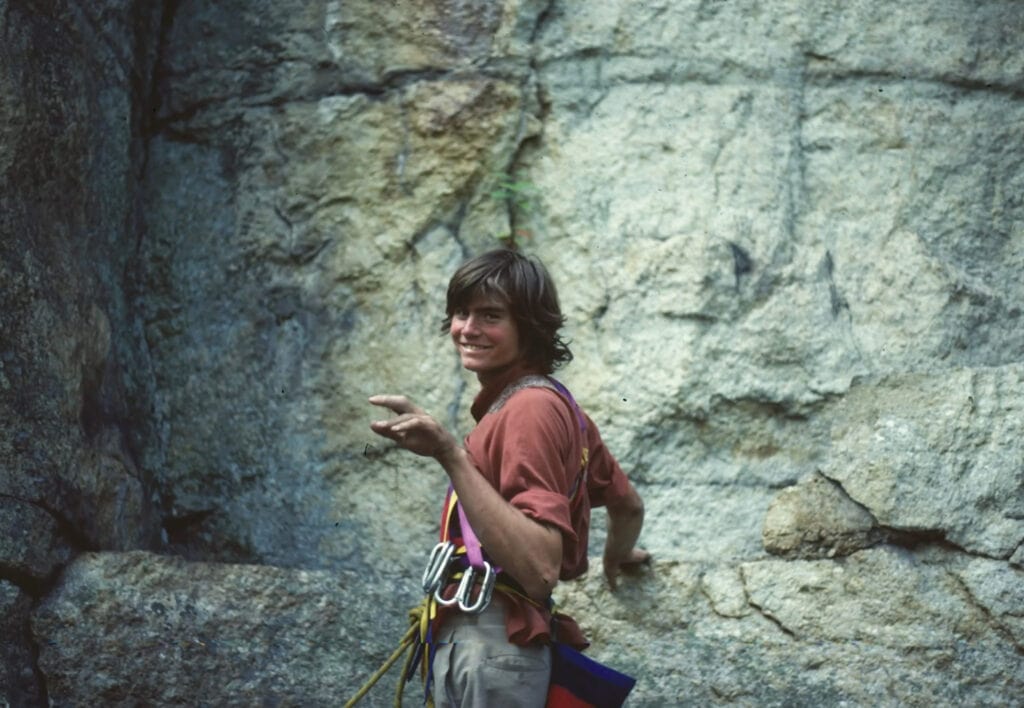Alex Lowe, World-Famous Climber & Subject of Documentary Torn
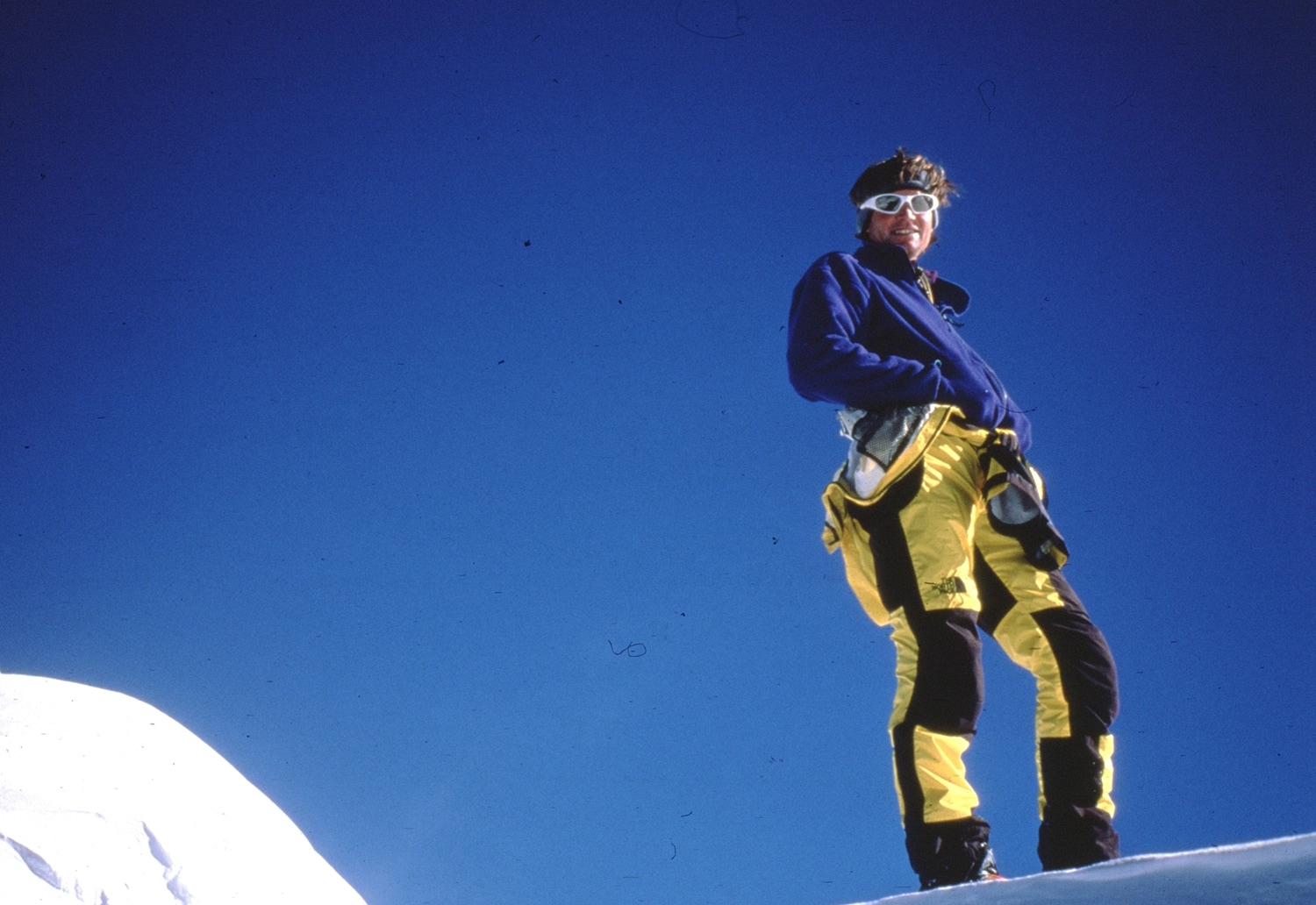
Published on: 12/15/2022
Early Life
Alex Lowe was born on December 24, 1958, to a Montana-based family, the second son of James and Dorothea Lowe. He grew up in Missoula, where his father taught at the University of Montana. His mother taught in a local elementary school. His family was heavily outdoors-minded, and Lowe was backpacking in the wilderness from an early age.
Though he was not particularly athletic, and in later life remarked how he was often “picked last” for organized sports at school, he was a natural outdoorsman. As a teen, he earned the rank of Eagle Scout, the highest honor in the Boy Scouts of America. Lowe began mountain climbing while still in high school and made a number of first ascents in his local Bitterroot Mountains.
After graduating high school in 1976, Lowe attended Montana State University, earning an engineering mechanics degree. After college, he worked performing seismic surveys in Wyoming and on oil rigs. He was also in the quality control department of Black Diamond. He married fellow climber Jenni Daly in 1982. The pair had three children, Max, Sam, and Isaac.
By the late 1980s, however, Lowe had begun climbing full-time, embarking on expeditions around the world. Lowe was also a frequent public speaker, a mainstay in National Geographic, and a member of The North Face’s climbing team for nearly a decade until his death in 1999.
Climbing Style and Specialty
Though considered an extremely versatile climber, Alex Lowe was primarily an alpinist. His most legendary climbs were on high-altitude summits in remote ranges and regions, such as Alaska, Antarctica, Baffin Island, the Karakorum, and the Himalayas. However, Lowe made a number of difficult technical ascents on rock and ice, including new routes in the Tetons. In fact, Outside named him “the world’s best climber” after his death.

A Great Athlete
Climbing accomplishments aside, Lowe was well-known for his strength and stamina. His daily regime included several hundred chin-ups and dips. He practiced it even while on demanding expeditions in remote locales. Lowe was known for hauling exercise equipment up climbs, performing hundreds of reps of pullups or pushups even after grueling days on the wall, and finding ingenious surfaces to exercise on. Friends and fellow team members often jokingly referred to Lowe as “Lungs With Legs” and “The Mutant” because of this incredible fitness.
Lowe himself was open about his desire to remain well-rounded, not to specialize in any particular style of climbing.
“I happily claim expertise in no single aspect of climbing,” Lowe famously said, “which is what has kept the passion burning hot all these years.”
Despite his indomitable strength and skill, Lowe pursued climbing for the love of the sport. Ironically, one of Lowe’s most famous quotes today is:
“The best climber is the one having the most fun.”
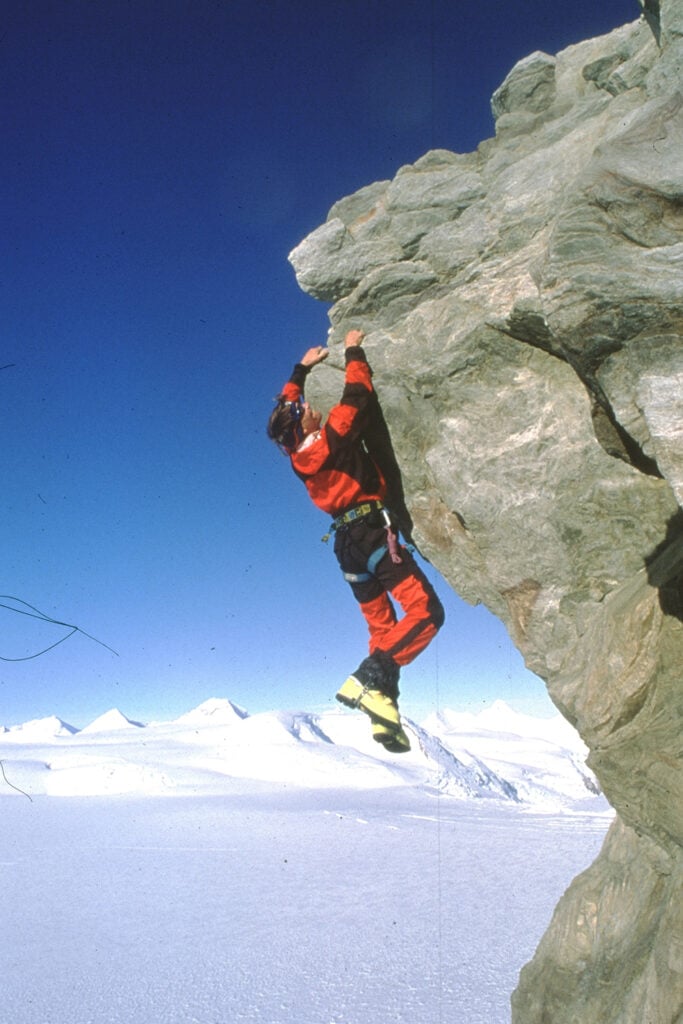
On Risk
Despite his prolific resume (more below), Lowe was not considered a risky or irresponsible climber. Many friends and climbing partners indicated that despite the often rugged and remote nature of many of his objectives, Lowe was also very safety-conscious. However, he admitted that an element of risk was an integral part of the challenge of climbing. “When you remove the risk, you remove the challenge,” Lowe once said. “When you remove the challenge, you wither on the vine.” In addition to pure risk, he often noted the instrumental role that a healthy relationship with fear played in the enjoyment of the sport. “Identifying and overcoming natural fear is one of the pleasing struggles intrinsic to climbing,” he said.
Off the wall climbing, Lowe was something of a polymath, according to friend Gordon Wiltsie. In the American Alpine Journal, Wiltsie wrote in his obituary that
“[Lowe] wasn’t just an athlete. He was always thinking about how things in the world worked, and, in a storm-bound tent, it was humiliating to swap books with him. In exchange for your own tawdry novel (which he was not above reading), you’d likely get some textbook on quantum mechanics or a spiritual tome by the Dalai Lama.”
Wiltsie went on to mention that one of Lowe’s favorite quotes was from Pascal,
“Something along the lines of ‘life is motion, and when you stop moving, you die.'”
Notable Feats
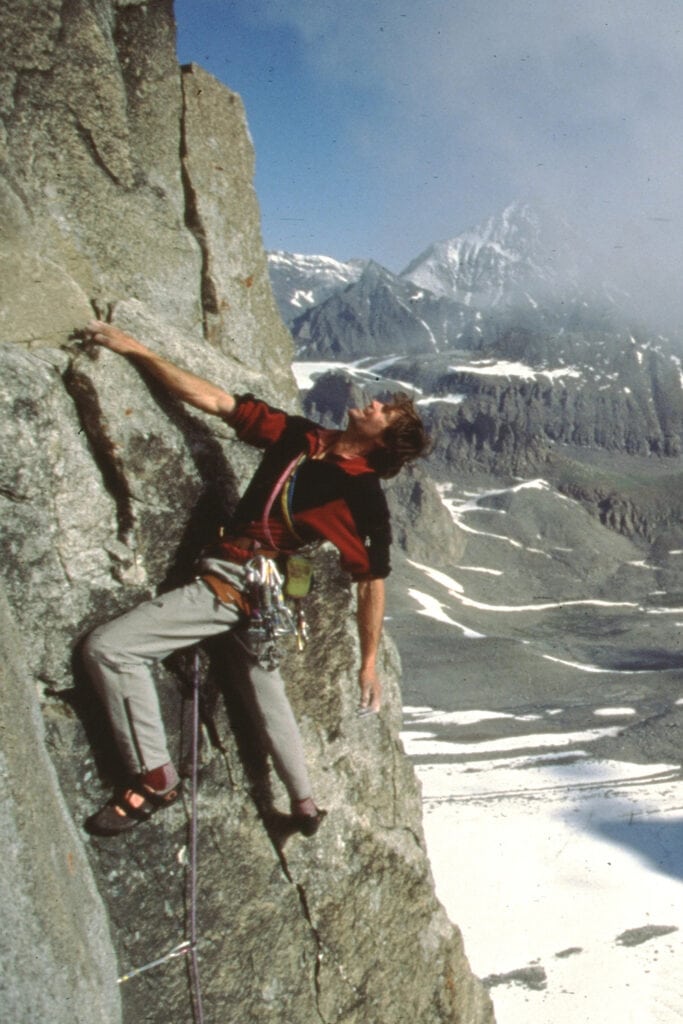
Alex Lowe was known for a number of first ascents on both rock & ice, as well as difficult summits of high-altitude peaks in dozens of countries. He also made several first ski descents, including the Northwest Couloir of the Middle Teton and the Enclosure Couloir of the Grand Teton, both in Wyoming. Another of his most well-known ski descents was the Hellmouth Couloir of Peak 10,031, outside his hometown, Bozeman. The mountain was re-named “Alex Lowe Peak” in his honor in 2005.
“We believe that everyone who climbs this special mountain will feel Alex’s presence and exhilaration at being there,” said his parents of the re-christened Alex Lowe Peak. “He was our beloved son, and it gives us tremendous pleasure to know there’s a peak with his name, one that he skied in his adventurous way, and we know he would feel honored and humbled by this recognition.”

First Ascents
Lowe had dozens of first ascents to his name, including the Rakekniven in Queen Maud Land, Antarctica, and Great Sail Peak on Baffin Island. He also put up new routes on Mount Hunter in Alaska, Kwangde Nup and Kusum Kanguru in Nepal, the Great Trango Tower in Pakistan, Peak 4810 in Kyrgyzstan, and the Grand Teton. Lowe also climbed the Matterhorn, K2, Mount Everest (twice), Aconcagua, and Khan Tengri and made attempts on Gasherbrum IV and Annapurna IV, among many other major summits.
“There are two kinds of climbers,” Lowe once said, “those who climb because their heart sings when they’re in the mountains, and all the rest.
One of his most storied climbs, however, was the first free ascent of Troubled Dreams on Mount Rundle in the Canadian Rockies. The route is considered one of the range’s most difficult mixed climbs. Lowe was also lauded for several rescue efforts on Denali in 1995, a year that saw half-a-dozen deaths. He assisted the U.S. National Park Service in rescuing several groups of climbers, including a group of Spaniards that was stranded for several days, suffering from hypothermia, high on the 20,000-foot peak.
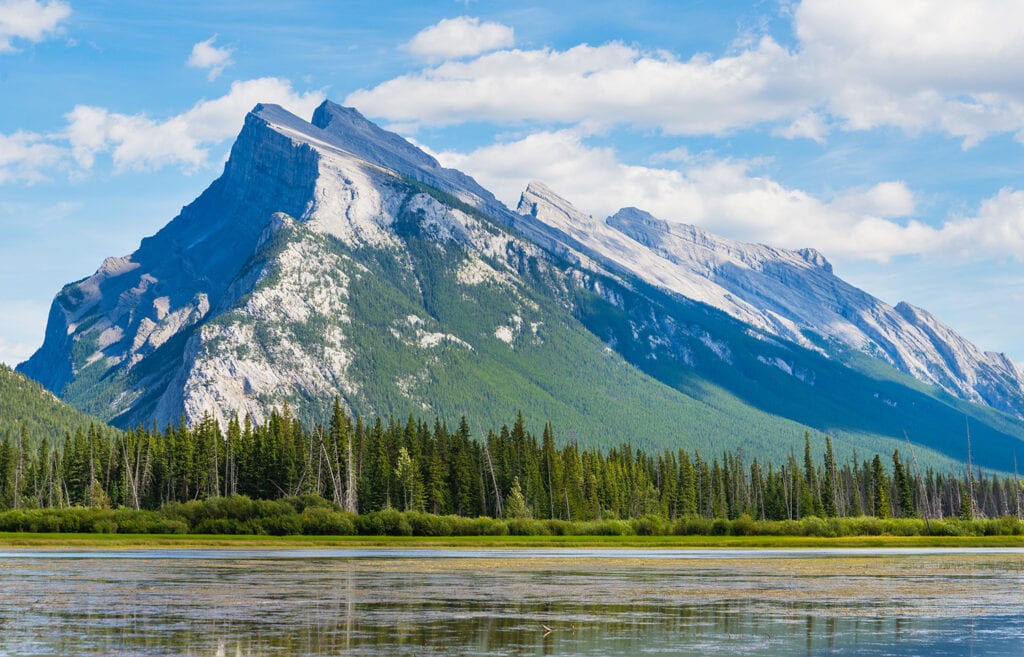
Death
Lowe died on October 5, 1999, in an avalanche on Shishapangma (8,027 meters), the world’s 14th-highest mountain. Lowe, along with David Bridges, Conrad Anker, Andrew McLean, Mark Holbrook, Hans Saari, and Kristoffer Erickson, was part of an American team hoping to become the first Americans to ski down from an 8,000-meter peak.
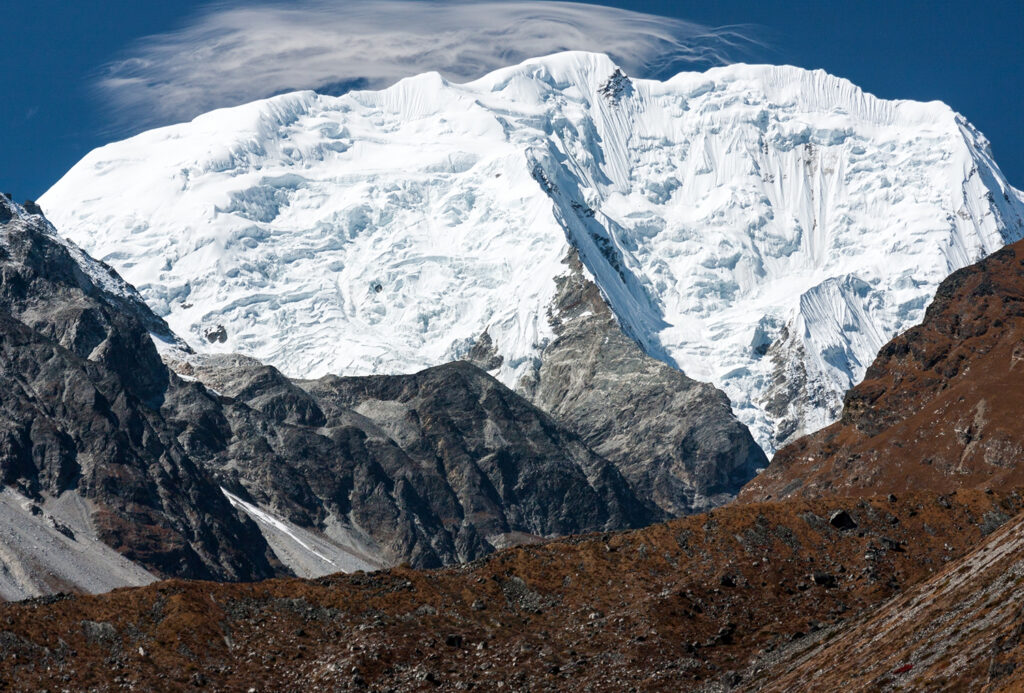
“It’s been a passionate goal of mine to ski off an 8,000-meter peak,” Lowe told MountainZone (1) before the expedition:
“I guess there’s a lot of people sort of looking to do this and try to ski off Everest. But for me, it’s got to be an aesthetic and quality run. And Shishapangma has the best ski line of any of the 8,000-meter peaks. It’s just an absolutely straight shot right down the Southwest Face. That’s going to be a good one.”
The expedition was to be filmed as part of an NBC documentary.
Avalanche
Both Lowe and Bridges (one of the team’s cameramen and an accomplished mountaineer & paraglider) were killed after a large serac broke off approximately 6,000 feet above them. The falling debris eventually formed a 500-foot-wide avalanche that hit Lowe, Bridges, and partner Conrad Anker, who were all crossing the glacier together. The latter was thrown approximately 100 feet by the blast and suffered from broken ribs and dislocations but survived. Though Anker and the remaining team members searched extensively for nearly two days, they could not find Lowe or Bridges’ bodies and eventually gave them up for lost. The bodies of the two men were not recovered until 2016.
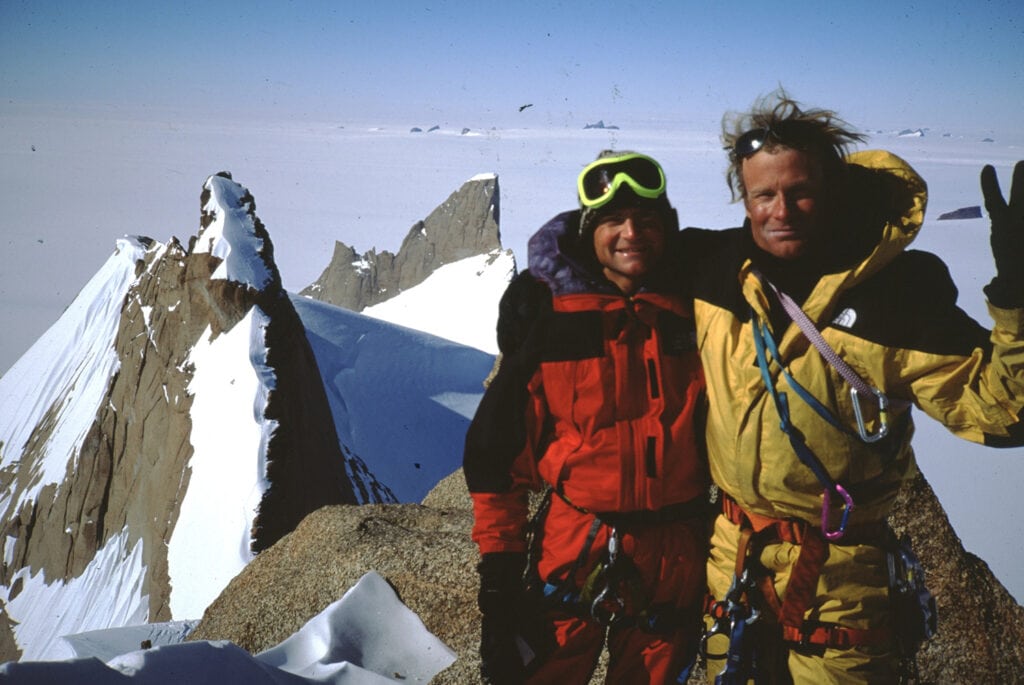
Shortly after Lowe’s death, his best friend and climbing partner, Conrad Anker, fell in love with and married his widow, Jennifer Lowe (now Jennifer Lowe-Anker). Max (10) and his two brothers, Tom (7) and Isaac (4), were raised by Conrad and Jenni as the Lowe-Anker family.
Forget Me Not
Jenni Lowe-Anker published a memoir, Forget Me Not (2008), covering her life with Lowe, his death, and how she navigated the void formed in his absence in her later years and continued to raise their three young sons with the help of Anker. Forget Me Not won the National Outdoor Book Award the year it was published. The award-winning National Geographic documentary Torn (see below), directed by his son, Max Lowe, also covers Lowe’s death and the effect it had on his family. Although he pursued difficult and dangerous objectives throughout his life, Lowe was a staunch family man. He once admitted that he “would let climbing slide away if I had to maintain my relationship with my family. Because [family] really is the big adventure.”
Torn
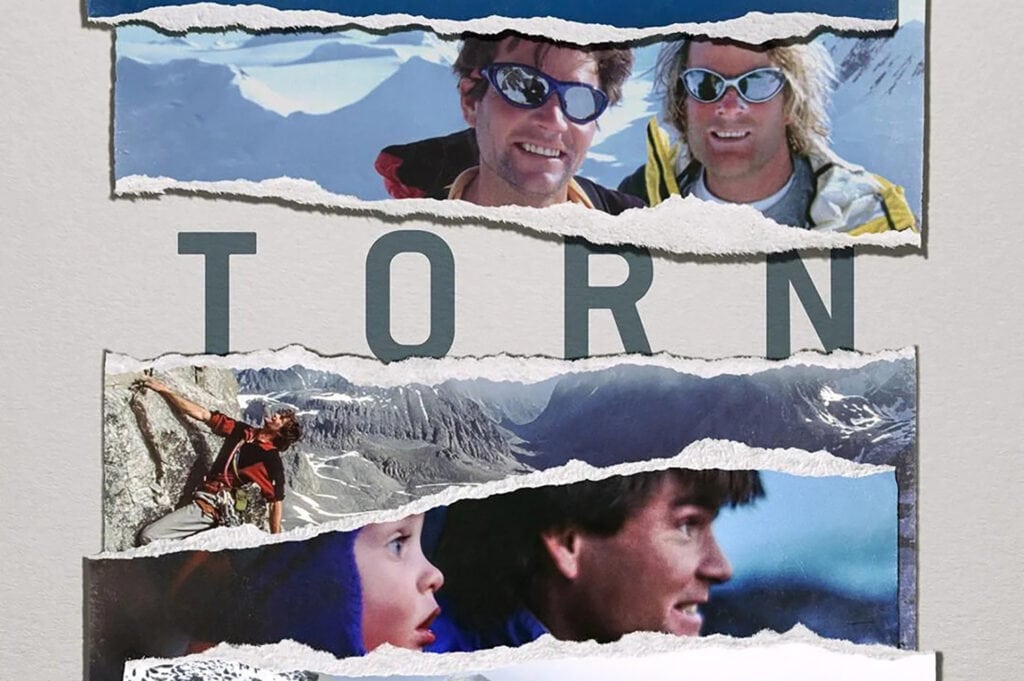
As mentioned above, Alex Lowe’s death and the aftermath of said tragedy is the primary focus of the 2021 National Geographic documentary Torn, directed by his son, Max Lowe.
Torn combines personal home videos with previously unreleased archival footage of the 1999 Shishapangma expedition. It also features footage of Lowe and Anker as young climbers and interviews with the Lowe-Anker family to explore Max’s relationship with his late father and his death. The film also highlights the Lowe-Anker family’s journey to recover Lowe’s body on Shishapangma, when it was finally found in 2016.
Torn was critically acclaimed and won several awards, including Grand Prize at the Kendal Mountain Film Festival, Best Feature Film at the Banff Mountain Book and Film Festival, and the Jury Prize for Best Documentary at the YES Film Fest.
Alex Lowe Charitable Foundation
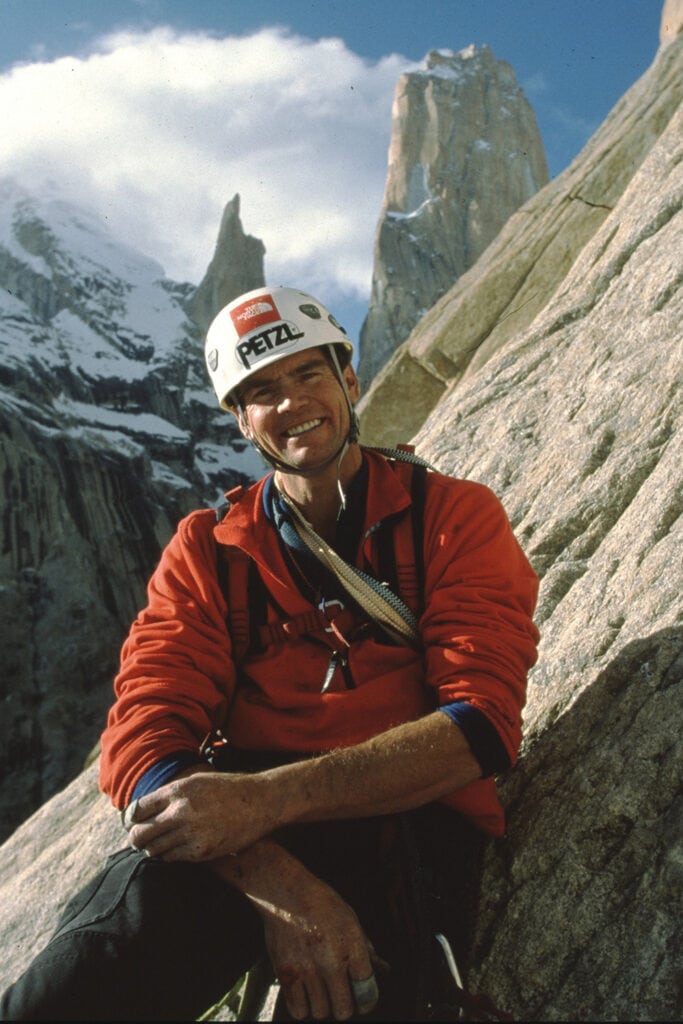
After Lowe’s death, his widow Jenni and close friend Conrad Anker (who eventually married) went on to form the Alex Lowe Charitable Foundation (2) in his name. The ALCF’s stated mission is “preserving Alex Lowe’s legacy by providing direction and financial support to sustainable, community-based humanitarian programs designed to help the people who live in remote regions of the world” and carrying on “Alex’s spirit of adventure.”
In 2003, the ACLF and Anker also helped to found the Khumbu Climbing Center (3), a school that aims to increase the safety margin of both Nepali climbers and high-altitude workers by “encouraging responsible climbing practices in a supportive and community-based program.”
The KCC educates indigenous climbers and workers via a variety of courses taught each winter season. The subjects range from English language to mountain safety, rescue, and wilderness first aid. To date, over 1,000 Nepali men and women have passed through the school. Although initially many courses were taught by Western climbers, now the vast majority of the staff and instructors at the KCC are indigenous.
More Quotes from Alex Lowe
- There are people who can’t bear to fail. Those people are on the short track as far as their careers go. You have to push hard, do hard things. But you also have to be able to say, ‘OK, today’s not the day.’
- Inspiring passion in family and friends has more enduring value than just staying alive for them.
- It’s the journey toward doing … harder climbs that really gives value to the whole activity of climbing.
Frequently Asked Questions (FAQs)
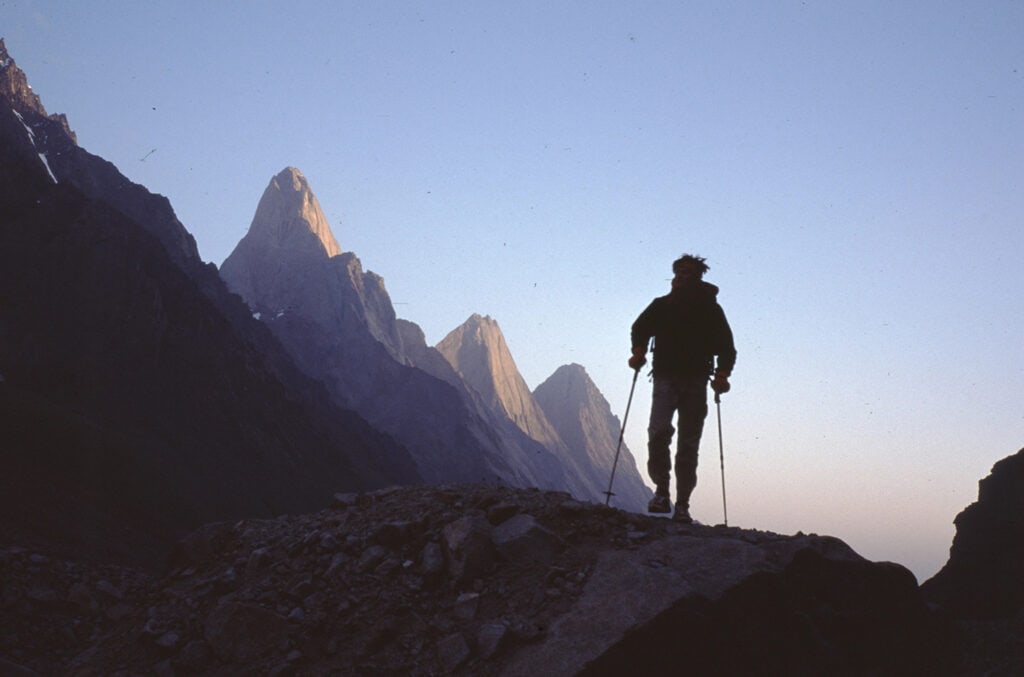
Alex Lowe died in an avalanche on the 8,000-meter Tibetan peak Shishapangma in October of 1999. Cameraman David Bridges (29) was also killed, and team member Conrad Anker narrowly escaped. Lowe and Anker were part of a U.S. team hoping to become the first Americans to complete a ski descent from an 8,000-meter peak. Lowe was 40 years old.
Alex Lowe’s body was recovered, although not for over 15 years after his death. In 2016, Swiss & German climbers Ueli Steck and David Goettler discovered the bodies of Lowe and David Bridges (who died in the same avalanche that killed Lowe), melting out of a glacier on Shishapangma.
Max Lowe was 10 years old when his father, Alex, died in an avalanche on Shishapangma (8,027 meters) on October 5, 1999. His younger brothers Sam and Isaac were seven and four years old, respectively. His father’s death and his struggle to cope with the loss are the principal focus of the documentary film Torn, which Max directed.
Alex Lowe was considered among the most talented and accomplished mountaineers of his time and was widely known for his boundless stamina on the wall. Lowe put up a number of hard rock & ice routes worldwide, climbed on The North Face team for nearly a decade, and was a highly-regarded skier. He received the American Alpine Club’s Underhill Award (1995) for outstanding mountaineering achievement. However, despite his skill and success, Lowe was also famous for his quote, “The best climber is the one having the most fun.” He also considered the sport of climbing “a journey without culmination” and said that because climbing is “less a sport and more a hobby … everybody’s a beginning climber.”
References
Is There Anything This Guy Can’t Climb?
Mountain Zone
https://www.mountainzone.com/climbing/99/interviews/lowe/
Alex Lowe Charitable Foundation
https://www.alexlowe.org/
Khumbu Climbing Center
https://www.khumbuclimbingcenter.com/

